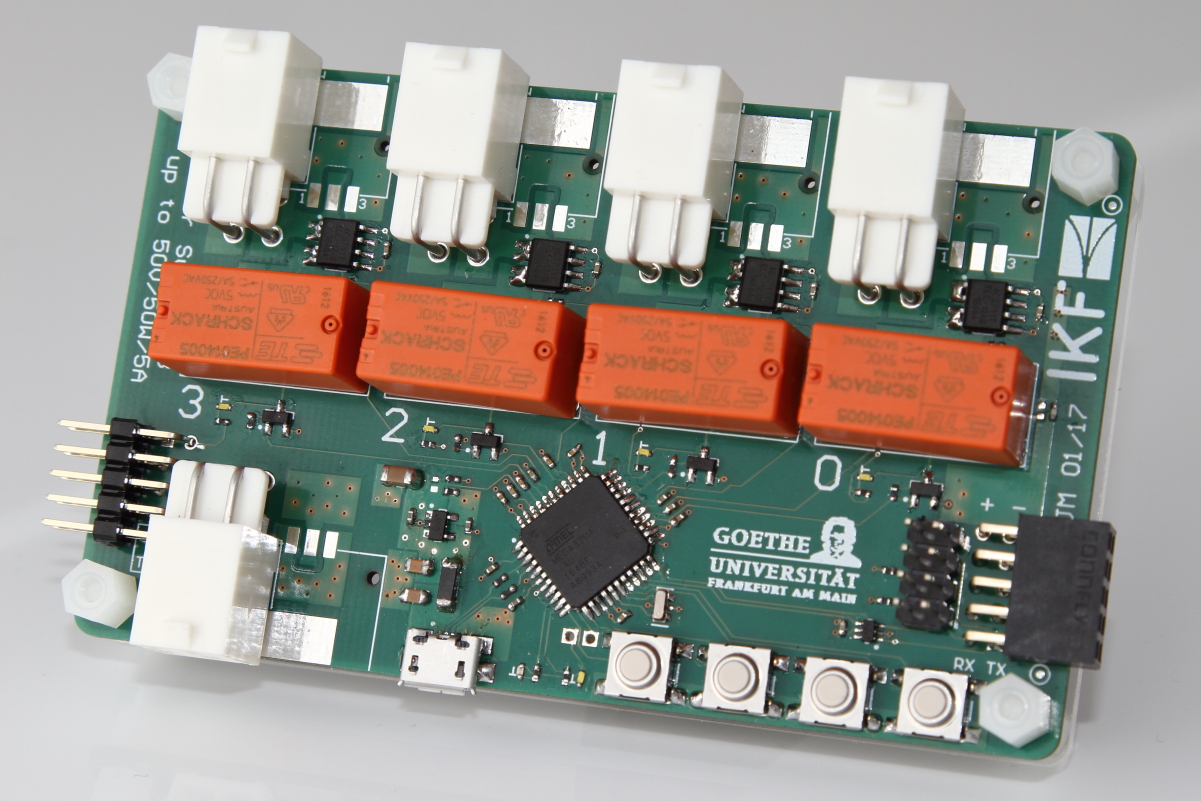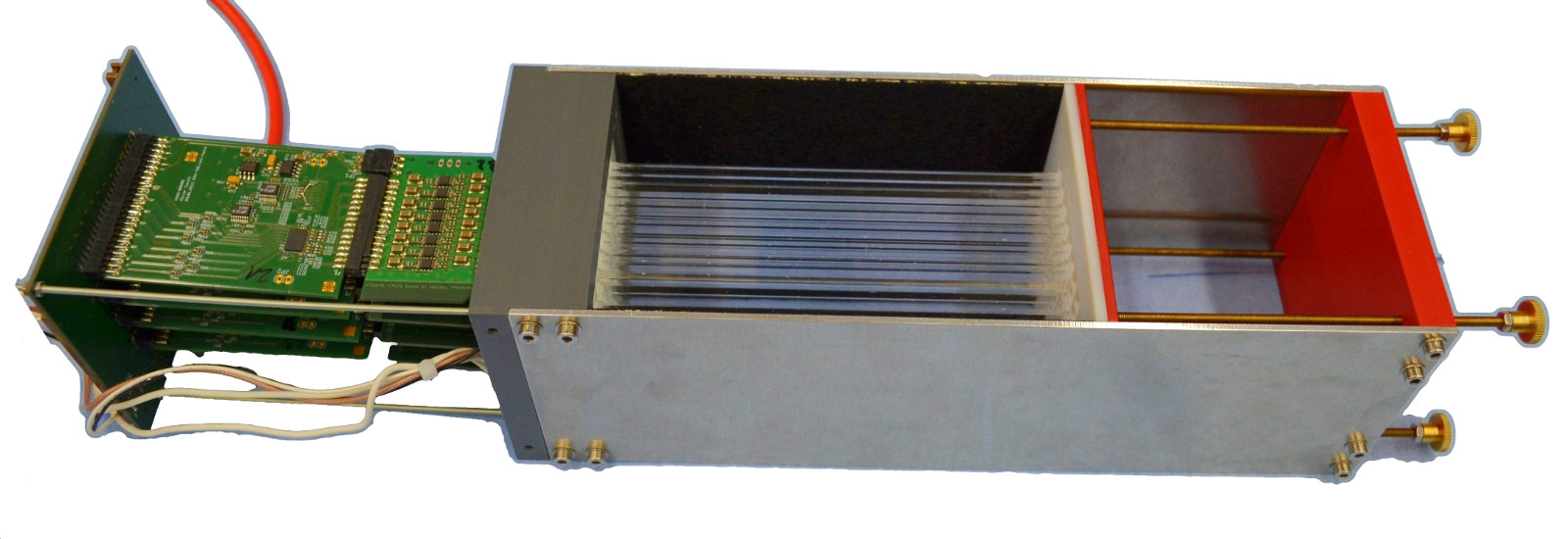
The new power switch module allows you to switch power to any other hardware remotely. The board can be equipped with both our standard power connectors and each channel is able to stand 50 V or 50 W or 5 A, whatever is reached first. Remote control is possible via USB or any available UART connection, for example via TrbNet and FPGA on a TRB3. The boards can be cascaded to "any" number of channels on a single control interface, as long as the power consumption of the board itself can be met. Features include current measurement on each output and programmable over current protection thresholds.
A
brief documentation exists.

A segmented Fast Light Acquiring Start Hodoscope
(FLASH) prototype was constructed and tested at the Mainz Microtron
(MAMI). Its working principle is based on the detection of Cherenkov
light, produced inside radiator bars made of synthetic fused silica, by
fast Micro-Channel Plate PMTs (MCP-PMTs). The bars are inclined with
respect to the particle trajectory to match the Cherenkov angle to
mininmize reflections off the radiator surfaces.
The segmentation allows determining a coarse impact position (~few mm) and also repeatedly measuring the arrival time so
that an averaging procedure can be used to improve the timing precision.
The FLASH protoype is built around the PLANACON
64-channel MCP-PMT with a pore size of 10 micron. The radiator bars (5 x
5.5 x 140 mm^3) are arranged in an 8 x 8 matrix so that each radiator
bar matches a pixel on the MCP-PMT. The MCP-PMTs are equipped with
NINO-based frontend electronics providing leading edge time and
Time-over-Threshold (ToT). The frontend electronics is read out with
modified TRB boards where the DC/DC converters were taken off.
Two such units were tested using the 855 MeV
electron beam of MAMI. The detector response was investigated and the
basic characteristics were extracted. The timing performance was studied and
the ToT information was used to perform walk corrections. The best
timing precision achieved was ~50 ps per FLASH unit. The results are also published here:
http://dx.doi.org/10.1016/j.nima.2017.02.080



